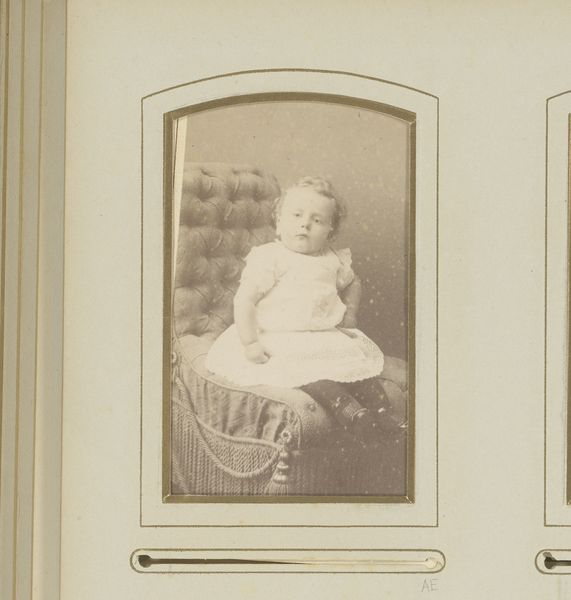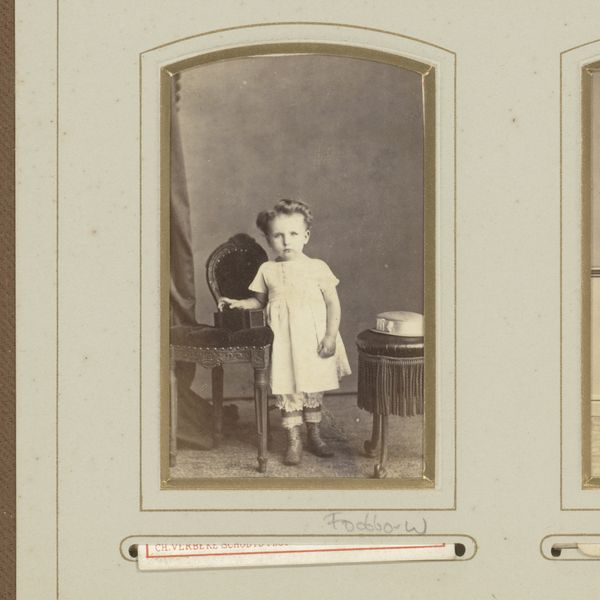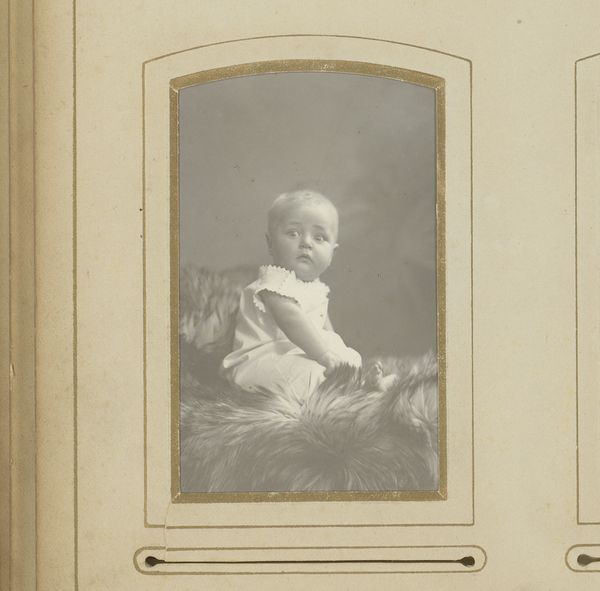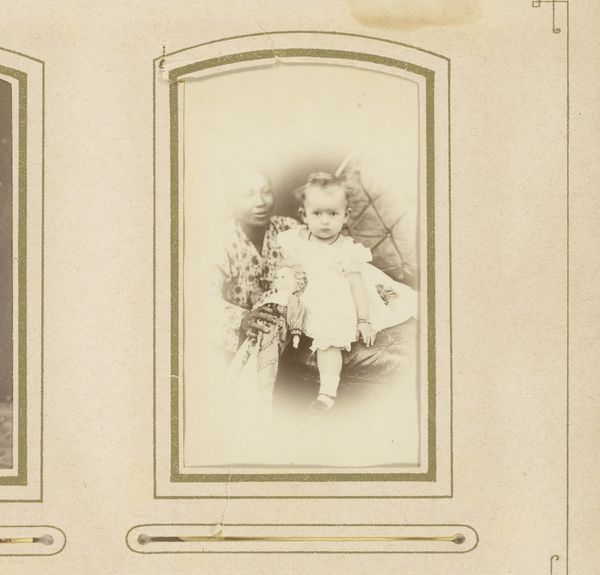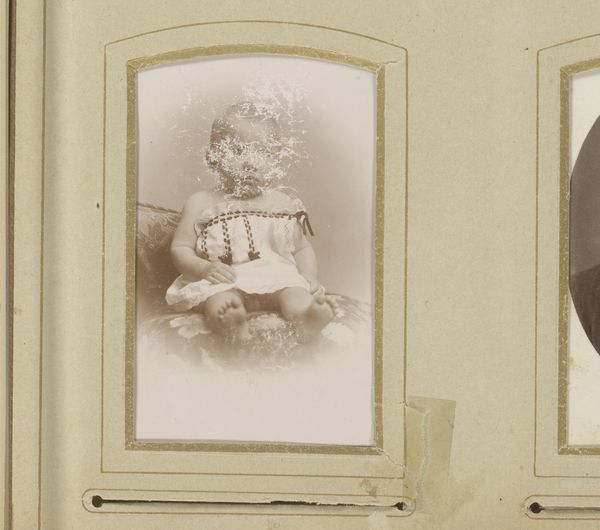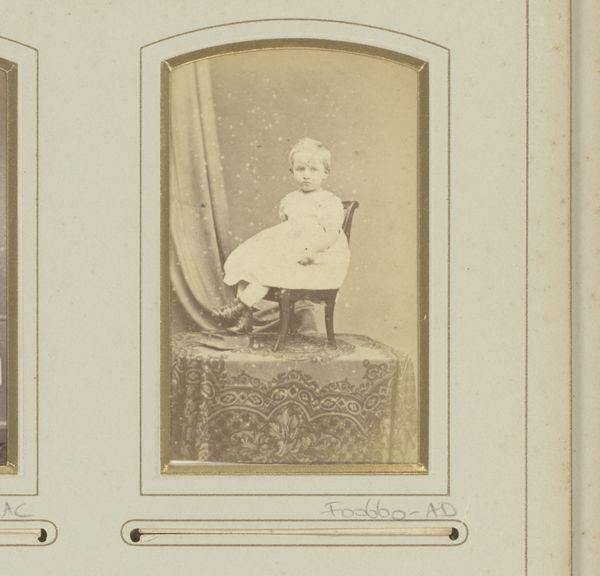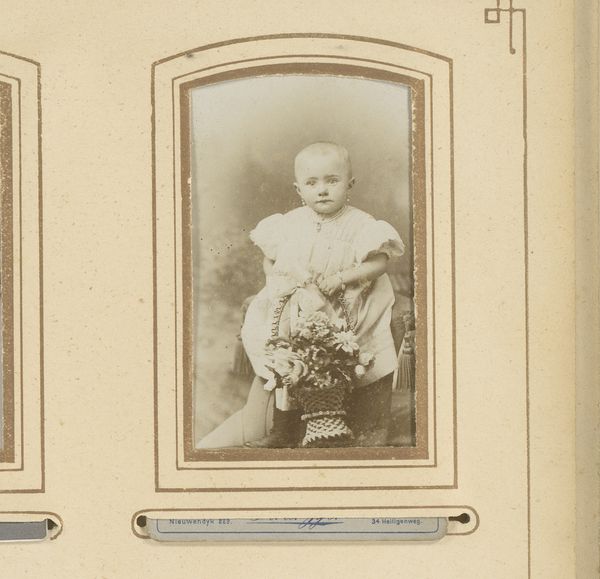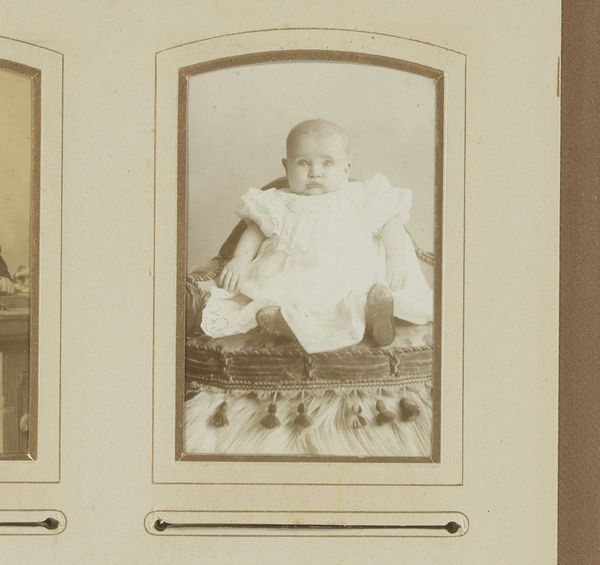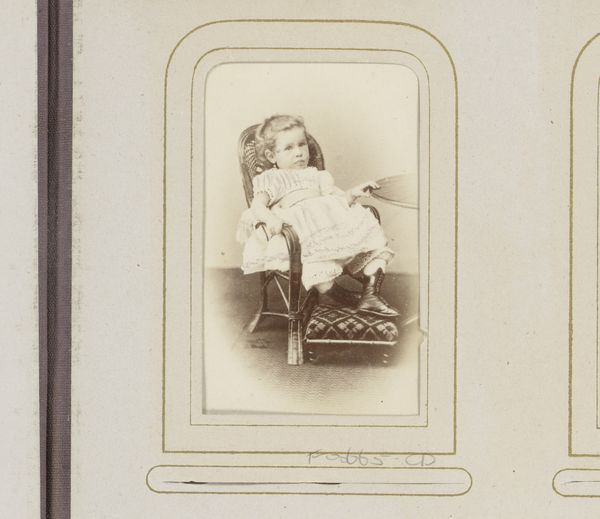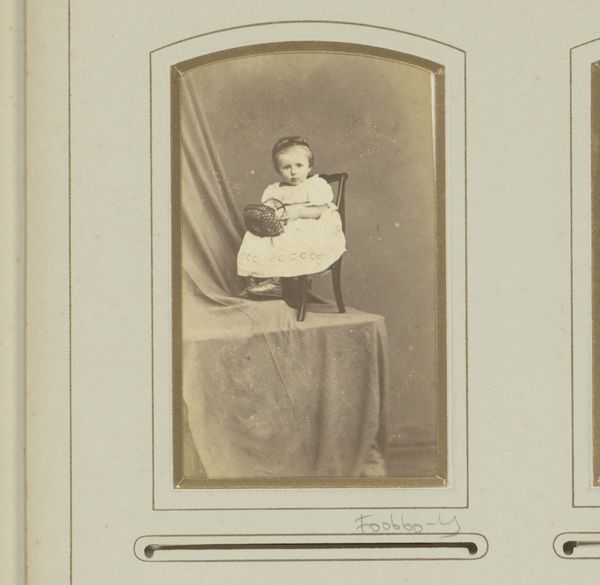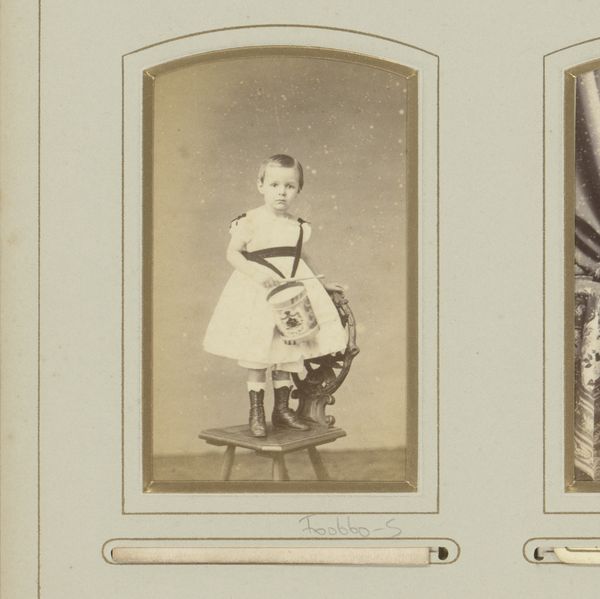
photography, albumen-print
#
portrait
#
photography
#
genre-painting
#
albumen-print
Dimensions: height 84 mm, width 52 mm
Copyright: Rijks Museum: Open Domain
Curator: This is Abel Bordéria’s, *Portret van een zittend kind,* or *Portrait of a Seated Child*. It's an albumen print, placing it sometime around 1874 to 1879. Editor: My first impression is of a miniature monarch. Perched in that ornate armchair, the child's expression conveys a surprising amount of self-possession for such a young age. Curator: Photography in the late 19th century took on portraiture to cement bourgeois values and create a semblance of familial posterity. This is particularly evident in carte-de-visite or the family photo album, reflecting social status and stability. Editor: Yes, look at all the layers—the decorative carpet, the tasseled chair, and even the draped fabric in the background create a tableau of carefully curated symbolism. In many ways, the child isn't just an individual but represents a lineage and a promise of the family's future. The chair is clearly a symbolic stand-in for a throne. Curator: What’s intriguing is that, although photography became accessible during this period, sitting for a portrait remained a relatively formal and perhaps a stiff affair, further solidifying these ideals through popular representation. The genre-painting aspects can't be dismissed either—it represents a slice of life elevated to an art form. Editor: There's also a kind of fragility—albumen prints are so delicate, prone to fading. The photograph becomes not only a record of a person but also a memento mori, reminding us of time's passage. I am intrigued by the child’s bare feet—it adds to a touch of disarming candor, subtly challenging the formal atmosphere of the portrait. Curator: And the bare feet draw the viewer to question how truly authentic a slice of life Bordéria presents. Were those tiny feet purposefully exposed, or does it point toward more spontaneity than we allow for? These formal sittings served to control narrative but also present opportunity. Editor: Precisely! The juxtaposition of vulnerability and the posed formality highlights our yearning to freeze moments and imbue them with lasting meaning, despite the fact that these posed portraits may conceal more than they reveal about genuine intimacy. Curator: By analyzing its creation and function, we reveal the interplay between artistic aspiration, societal norms, and the emergence of photographic practice during a fascinating transitional time. Editor: And perhaps reveal the symbols that endure across the ages of familial projection.
Comments
No comments
Be the first to comment and join the conversation on the ultimate creative platform.

